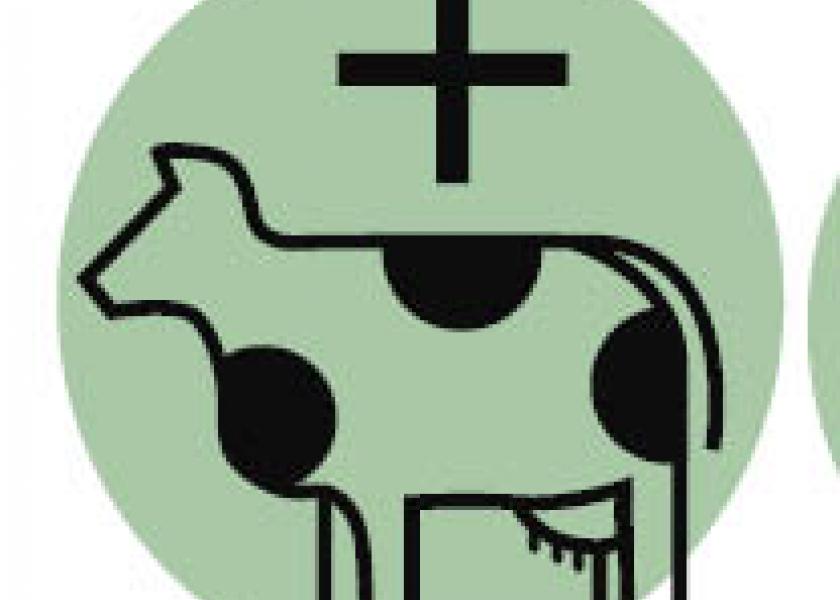What to Expect from the 2020s

During the past decade, we saw numerous changes in beef and dairy production, and in the ways veterinarians serve those industries. These include the emergence of remote monitoring, advanced data systems, new diagnostic tools, genomic technologies, acceleration of antibiotic-resistance in cattle pathogens and drug resistance in cattle parasites.
Most of these trends will continue through the 2020s, and we’ll see the emergence of new trends, new insights and applications for science and technology in animal agriculture, along with changes in regulations, production practices, consumer perceptions and preferences.
While no one can predict every trend, veterinarians serve as forward-looking change agents in animal agriculture, as they continuously evaluate new systems, products, practices and philosophies for potential adoption on their clients’ operations.
With that in mind, we asked veterinarians for their thoughts on the key challenges and opportunities for success in eight categories during the decade of the 2020s. Following are their responses related to animal welfare.
Hans Coetzee: A significant area of focus will be the development of technologies to mitigate pain and advance animal welfare in cattle. In the near term, I anticipate we will see a lot more analgesic drugs being developed and approved. Currently, Banamine Transdermal is the only analgesic drug with FDA approval to alleviate pain associated with footrot in cattle. There are presently no analgesics approved for use at the time of dehorning and castration. I expect that these compounds will be easy to administer and long-acting, but they will need to be cost effective for adoption by the industry.
Scott MacGregor: We need more study of animal behavior as it relates to health, performance and finish quality, which will require a positive value proposition. Veterinarians will be in a good position to filter what works and more importantly, what doesn’t.
Dee Griffin: We’ll see more focus on environmental management such as mud control, respirable dust control and heat stress management in feedlots. On the High Plains, we have an exceptional natural environment for feeding cattle, but still have muddy days, and dust is an issue in most feedyards. Cost-effective shades following the USMARC guidelines might prove a good investment for some yards. As you move to higher humidity climates, shades along with increasing the reserve water supply can be life-saving.
Renee Dewell: We’ll see continued movement towards pain mitigation for common production practices as a standard of care. I also think there will be an increase in the number of operations that are audited—with at least a component of the audit having to do with welfare.
Jacob Geis: I think our biggest challenge with animal welfare won't be from our clients. Most already understand expectations and embrace animal welfare. My concern is we may lose our welfare license with the general public due to propaganda from animal rights organizations. It is incumbent upon us to "hire smart," as it is for our producers.
Fred Gingrich: Veterinarians should speak for the cow. What are the biggest welfare concerns for a client? Is the farm at risk for an undercover video? Are employees empowered to report any suspicions of abuse, neglect or mistreatment? Is efficiency put above animal care? Are employees trained, monitored and re-trained on a regular basis? Specific areas of focus include pain management for castration and dehorning, lameness, timely euthanasia, chronic disease conditions and management of downers or injured animals.
Ryan Rademacher: Veterinarians will continue to play a pivotal role in shaping animal welfare and antimicrobial use practices; however, this does not occur passively. From client education to involvement in professional organizations, individual veterinarians will need to be active in shaping the future of the profession and industries they serve.
Gerald Stokka: We’ll see more emphasis on reasonable management of painful procedures, and eventual replacement of dehorning with gene editing, castration with vaccination and branding with electronic ID.
Tom Furman. I think new mechanical technology will help to make a difference in lowering animal and human stress during animal handling, while also helping fill the void created by a smaller workforce. A great example is hydraulic cattle chutes, which allow more efficient handling, less stress on animals and fewer people to run the facilities.
For responses relating to other subject categories, see these articles on BovineVetOnline:
Part 1: Client Services and Communications







